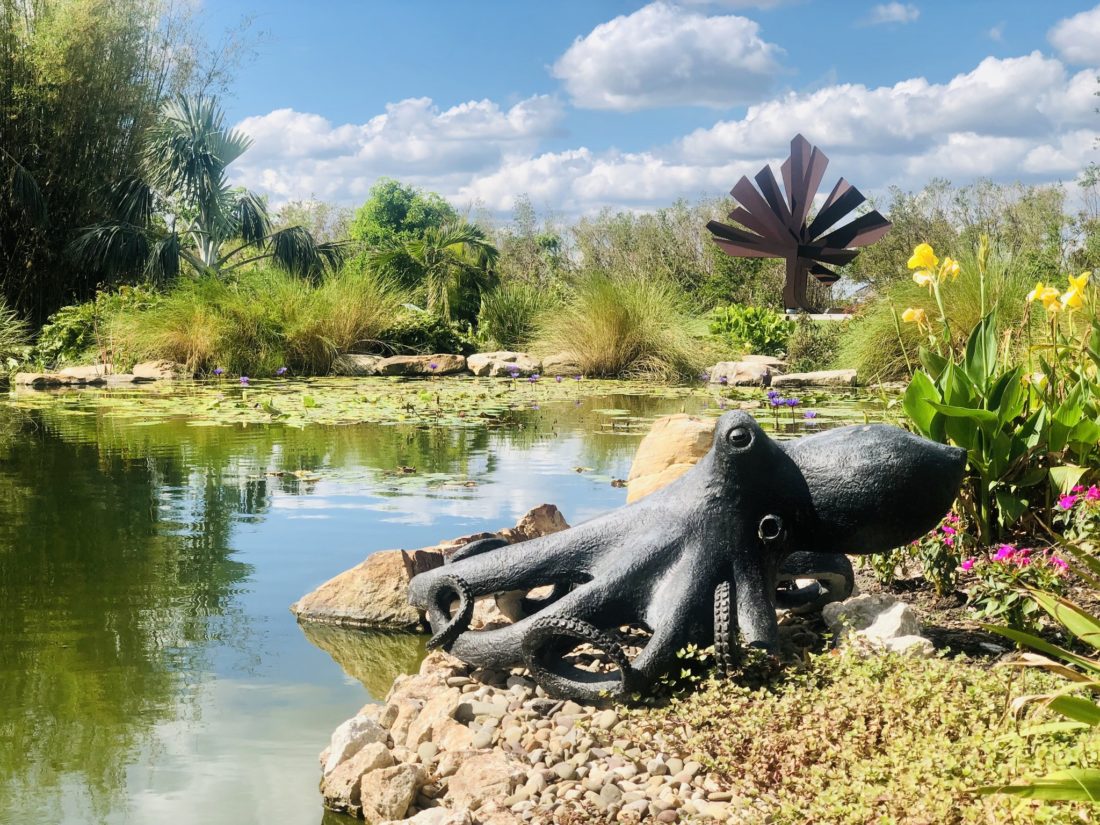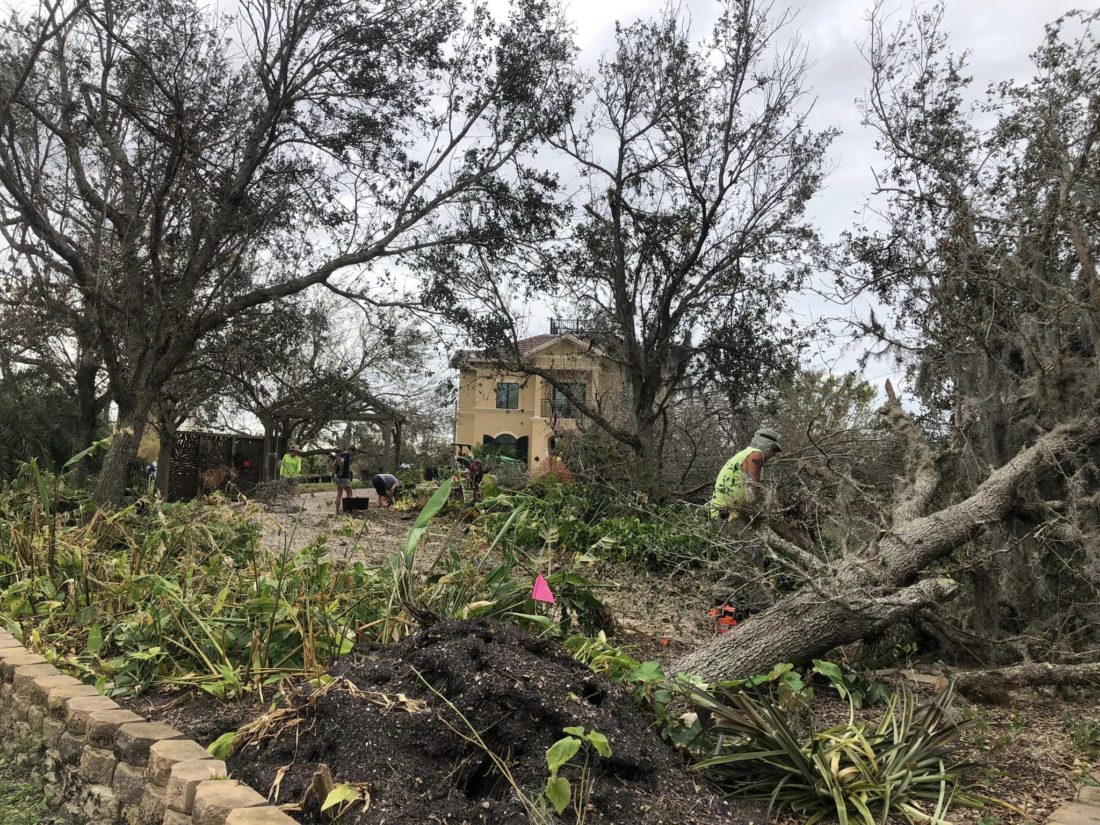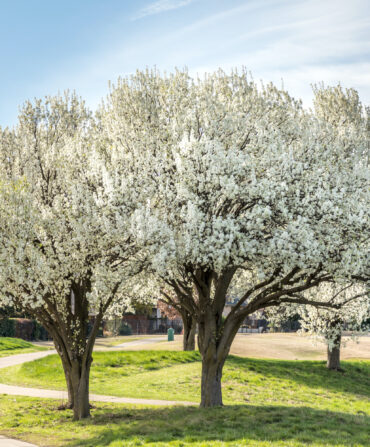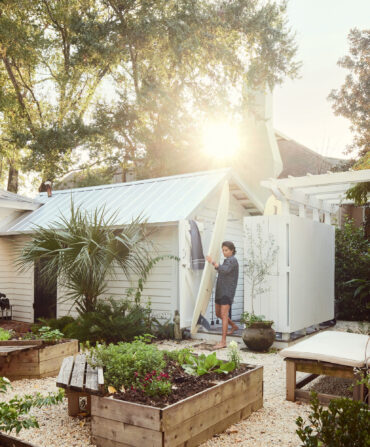At the Peace River Botanical and Sculpture Gardens in Punta Gorda, Florida, the statue of Andy Warhol was meant to look out over a waist-deep meadow of golden sunflowers. The breeze would rustle the leaves of feathery royal palms above. That was Tom Hecker’s dream, anyway. Instead, the director of horticulture sees leafless, toppled trunks and strangely stunted flowers.
Weeks after the Category 4 Hurricane Ian devastated the Gulf Coast of Florida, Hecker surveys the damaged paradise and scratches his head. “Why are all these sunflowers setting buds when they are only eight inches tall?” he wonders out loud. They didn’t get crushed or drown. They didn’t dry out after the storm. So why are these ten thousand plants so scrawny and stunted? And why, amidst the devastation, is he focused on little flowers?
Big things need immediate attention after a natural disaster. People need rescuing, food, water, and shelter. In those first days after landfall, Peace River cleared its warehouses and became a distribution center. Plants waited. But now big fallen trees have been cut, thirty-foot-tall sculptures stabilized, and a spectacular bougainvillea tuteur trellis scrapped.

Hecker isn’t new to this—he’s set the standard for more than a few South Florida gardens and was the founding director of the acclaimed Naples Botanical Garden. He understands tropical botany and plant physiology, but like so many plant people throughout the South, he’s still reckoning with how huge storms are permanently changing gardens, plants, and the people who tend them.

As the former director of several botanical gardens, I too have worked through devastating hurricanes and ice storms. I’ve talked to the television news crews and worked to get the gates open again. But the costs of a storm can be hidden. Across the Gulf of Mexico, the entire horticulture industry changed after Hurricane Katrina, which downed 320 million large trees. Mary Elliott, who owned a specialty fern nursery called Fronderosa, remembers it vividly. “Even the trees that made it had all their leaves blown off,” she says. “I was growing under natural shade, under trees. Suddenly I had no shade. But neither did anyone else. Even when folks got back into planting and gardening mode, no one wanted ferns.”
Elliott cleaned up her nursery and recast herself as the passion vine specialist. Today, she sells connoisseurs plants at trade shows and professional symposiums. But some small nurseries cannot recover and transition so quickly. Today, plants in big nurseries often begin their lives in factory-like facilities, called liner nurseries. The rooted micro-plants get shipped to regional big growers, where engineered systems pump them up. Eight weeks later, a grown plant plops on a truck, headed far away to a retailer near you.
If a big nursery gets hit by a storm, they can quickly clean up, order more micro-plants, and restart their process quickly. Small growers can’t rebound like that. Their prized ‘mother’ plant, the stock plant from which they take cuttings, may be damaged by salt, wind, or flood or stressed in some unknown way. Since hurricanes come at the end of the growing season, it may take a year to get the stock plant back to health, then another to get cuttings grown out for sale.
Small growers face other challenges, too. Electricity keeps nursery plants alive. Greenhouses need power for fans and heat. But wells and irrigation also depend on power. Plants in plastic pots depend on frequent watering. A small grower may have to decide between running a generator to power their kitchen or their irrigation. I once spent a full day during a storm shopping for a generator, which was only to be found three hundred miles away, and helping a rural nurseryman on Coosaw Island, South Carolina, wire it up to run his well. He’d been told to expect a week to ten days in the dark. This guy, a true plant hunter, held rare native plants he’d saved from development sites. If his nursery had dried out, the world would have lost important genetic diversity and great garden plants that we still love today.
Back in Florida, Tom Hecker surveys a toppled weeping Mast Tree. On its side now, a month ago it reached two stories. When healthy, these trees stand tall but skinny, sort of like stilt walkers dancing at a festival—willowy, elegant, ephemeral, a bit aloof. Hecker ties this fallen lady to his golf cart, drives slowly, and pulls it back up to vertical, then ties her in place and hopes.
“We’re a small, new garden, and we lost 237 trees,” he says. “We’ll save a few like this, but one thing I’ve learned is to start new with small trees. While some things can be propped up, most never regrow a strong root system. They’ll blow over with a good sneeze. My advice? Start small for healthy trees.”
When trees fall, we see the twisted roots and broken trunks. But we don’t see all the stress. In plants, as in humans, post-traumatic stress is real. Floods deposit salt in the soil that damages plants for decades. Winds carry seeds, birds, and insect pests to places they hadn’t been before. The Florida ecologist Roger Hammer remembers, “After Andrew in 1992, I was in charge of overseeing a work crew that worked at controlling exotic pests. We hired ninety full-time employees and divided them into three thirty-person crews, one each for the north, central, and south.”
But what about those small sunflowers? What stress stunted them? I ask Hecker to speculate. “You know that annual plants grow fast,” he says. “Their life cycle is to flower and make seed, to make a new generation. Something in the storm stressed the sunflowers. It could have been the winds whipping. It could have been bromeliads, branches, and leaves blowing across them, bending them down.”
He interrupts his own thoughts. “Now that’s something I’d never seen before Ian—bromeliads, uprooted, whipped off trees, blown around, and left bottom up. They all melted in the sun the next day. Or it could have been that our rain was really salty that night. Whatever that stress, the message our sunflowers got was that they better go on and flower fast, make some seeds before something like that happens again and they can’t complete their life cycle.”
Stunted flowers and all, the Peace River gardens has officially reopened its gates, and visitors are welcome to explore the gardens for free. Donations are welcome as they rebuild, but the website lays it out: “We will not charge admission for any guests so that everyone can find respite and relaxation. So come take a stroll, stop in to feed the koi fish, marvel at the many birds, and take the time to breathe and unwind. Let us replant, rebloom and regrow together…”
I remember vividly one funny little incident after an ice storm in South Carolina’s Lowcountry. Chainsawing my way to open a road through a garden, I came upon a plant I’d grown from seed. A rare cactus, crushed. One fist-size purple fruit lay on the ground. I picked it up, cut it, and slurped purple juice. A tart flavor, then something like bubble gum, melon, and happiness filled me. Now I had a hundred new seeds to start. Those moments take us away from tragedy and remind us that it is possible to continue.

Peace River Botanical & Sculpture Gardens is located near Punta Gorda, Florida, just north of Naples. In its fifth year open to the public, the garden features a collection of modern sculptures, young but creative plantings, a gift shop, and a nursery and boardwalks on the bucolic Peace River.








